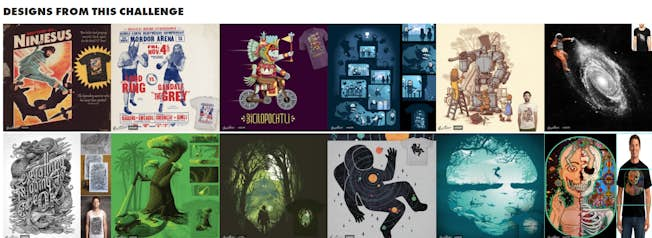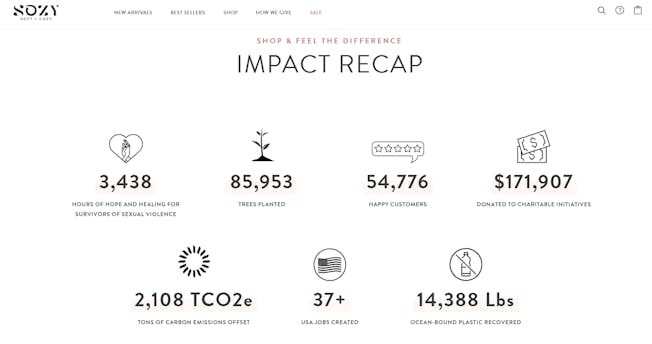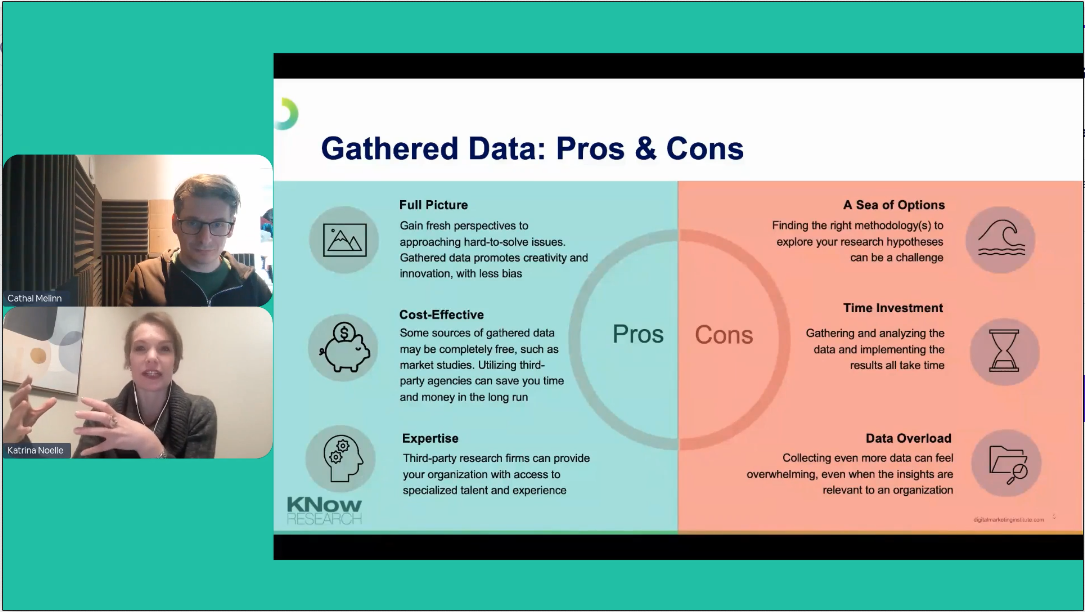The constant stream of ads and promotional messages has led to marketing fatigue among consumers. According to Optimove, 27% feel bombarded by the incessant messages and 66% want fewer ads.
Worn down by all the advertising noise, consumers are turning to recommendations from friends, family, or online communities to inform their purchasing decisions.
As a result, word of mouth marketing can help marketers cultivate brand advocates who actively promote products or services to their social media circles.
Integrating this approach into the broader marketing mix not only enhances the visibility of a brand, but it also brings authenticity that can lead to sustained growth and customer retention.
In this blog, we will explore:
- What is word of mouth marketing?
- What are the benefits of word of mouth marketing?
- How do you do word of mouth marketing?
- How do you measure word of mouth marketing?
- 3 great examples of successful word of mouth marketing
What is word of mouth marketing?
Word of mouth marketing is a form of marketing that is shared organically by consumers. It happens when people ‘spread the word’ about a brand or product.
This can be done in several ways and on different channels such as:
Online reviews
The core ingredient of word of mouth marketing, online reviews are how people share their recommendations (and warnings!) about products that they’ve used. Brands need to keep a close eye on these reviews to monitor brand sentiment.
User-generated content
By encouraging consumers to share user-generated-content, or UGC (such as reviews, unboxing videos, or fun uses of the product), brands can foster closer connections with their audiences and build valuable creative relationships. This is also a great way to spread positive word of mouth.
Social listening
Many people now share their thoughts about brands on social media, usually tagging the brand in their comments. Using social listening techniques, brands can get a good idea of what the ‘word on the street’ is about the brand.
Influencer marketing
Although people are somewhat more skeptical of influencers today, brands can still foster rewarding relationships with carefully chosen influencers. By selecting influencers that they’re confident that their audience will trust, brands can increase reach by cultivating positive brand advocacy.
Blogging
Don’t underestimate the power of blogging in generating good buzz around a brand. Don’t just share promotional content with your audience. Establish thought leadership around your brand and encourage people to take part in an ongoing conversation.
“90% of consumers are more likely to trust a brand that was recommended by others. 25% are likely to avoid a brand if a friend or family member shared a bad experience about that brand” Semrush
Traditional marketing channels often rely on paid advertisements or promotional campaigns. While word of mouth spreads organically by satisfied customers sharing their experiences with others.
By leveraging positive online buzz and social influence, brands can generate awareness, cultivate customer loyalty, build credibility and trust, and ultimately drive sales.
What are the benefits of word of mouth marketing?
Including word of mouth in your marketing strategy can bring several benefits:
- It is more cost-effective than traditional marketing or paid advertising.
- It has persuasive power because it is built on personal endorsements.
- It builds brand credibility because it’s seen as being more authentic and ‘real’ than carefully crafted advertising copy.
- It nurtures customer relationships by encouraging direct contact with the target audience.
- It helps to protect brands by making social listening and sentiment analysis key parts of the marketing approach.
- It enables brands to build a content library by encouraging UGC.
As Rand Fishkin said in his recent podcast with us, “Advertising is a terrible first way to reach somebody. It just does not perform versus organic brand mentions or word of mouth or from a trusted resource.”
How do you do word of mouth marketing?
First things first, do you know your target audience? This is important because to attract the word of mouth that increases brand reach, you need to know who you are talking to.
You can do this by analyzing data on how people interact with your website or how they use your product/service. Think about which platforms they are active on. Do they contribute to discussions on Reddit?
LinkedIn can also be a valuable source of audience data. Many people put more personal information on there than on other social platforms. For example, you can find out a person’s:
- Gender
- Birthday
- Job title
- Role description
- Keywords of skills and interests
When you merge this data with other data sources, you can build up a comprehensive picture of a target audience. For example, you might discover that people who search for spaghetti bolognese recipes are 70% men! This can then inform how you best write content for that audience.
Once you know your audience you can then implement a word of mouth marketing strategy. This requires you to focus on two key areas.
1. How you build the product/service
The best way to generate positive word of mouth around a product or service is to keep the user experience front of mind.
So consider the design and features. Your product doesn’t have to look beautiful. It has to function beautifully. It has to be easy for people to use.
Sometimes you have to compromise between product design and user experience. For example, an email inbox is not very pretty or ‘screenshotable’ but it's probably in its most useful form.
2. How you describe the product/service
Think about who your product or service is aimed at, and how you describe the product to that audience.
What does the product do? Who is it positioned for? What need does it address for them? What problem does it solve? Once you know the answers to the most important questions, then you can create compelling marketing content around that.
How do you measure word of mouth marketing?
It can be difficult to track the effectiveness of word of mouth marketing without large-scale, expensive market surveys.
Instead, brands can pay close attention to online brand sentiment using tools like SparkToro or Talkwalker and respond proactively to any negative word of mouth content.
You can also ask customers how they heard about your brand and use that as qualitative data. Email marketing can be helpful with this as you can send a message to existing customers or engaged prospects.
If your brand has a loyalty program, you can track promo codes or UTMs to measure leads generated or revenue.
3 great examples of word of mouth marketing
An effective word of mouth marketing campaign needs to be believable and shareable. You also need to be able to measure its effectiveness whether that’s through social media engagement or brand mentions.
Let’s look at three great word of mouth marketing campaigns to give you some inspiration.
1) Threadless

Threadless started out as a place to sell t-shirts and has evolved into a commerce marketplace for a range of products. Its success is down to its Artists Shop community where individuals make money by sharing their designs and selling products.
With an audience that values creativity and embraces fun, the company hosts challenges and contests that pit artists' designs against each other. This encourages its audience to participate by voting, sharing the contest amongst its social circle and building a community around the brand.
2) Sozy
Sozy is a women’s clothing brand with a difference. It’s committed to making a difference and donates 10% of its profit to survivors of sexual violence and a further 10% going to other charitable and environmental initiatives (along with being environmentally responsible in its clothing production).

3) Canva
For you B2B marketers, online graphic design tool Canva uses word of mouth to show how effective its platform is. They started off by targeting a specific audience – people with no design experience that wanted to create great designs.
From there the company has grown by creating an active community (plus free sign-up to try the product). The word of mouth strategy that’s proved successful (in addition to customer reviews and UGC) is their ‘Design Stories’ series.
This series shines a light on business owners who have succeeded using Canva. But it goes further than that by looking at the origins of these companies and the motivations of the founders to set them up. This series helps build brand affinity and engage its audience in a connected community.
Use digital channels to drive brand awareness and generate leads
With so many brands competing for the eyes and wallets of customers, it’s important to leverage digital channels to stand out. Our Professional Diploma in Digital Marketing will not only teach you the fundamentals it will also explore how AI is changing digital marketing. You will also explore key areas such as content marketing, social media, SEO, strategy, PPC, email marketing, GA4 and much more.

